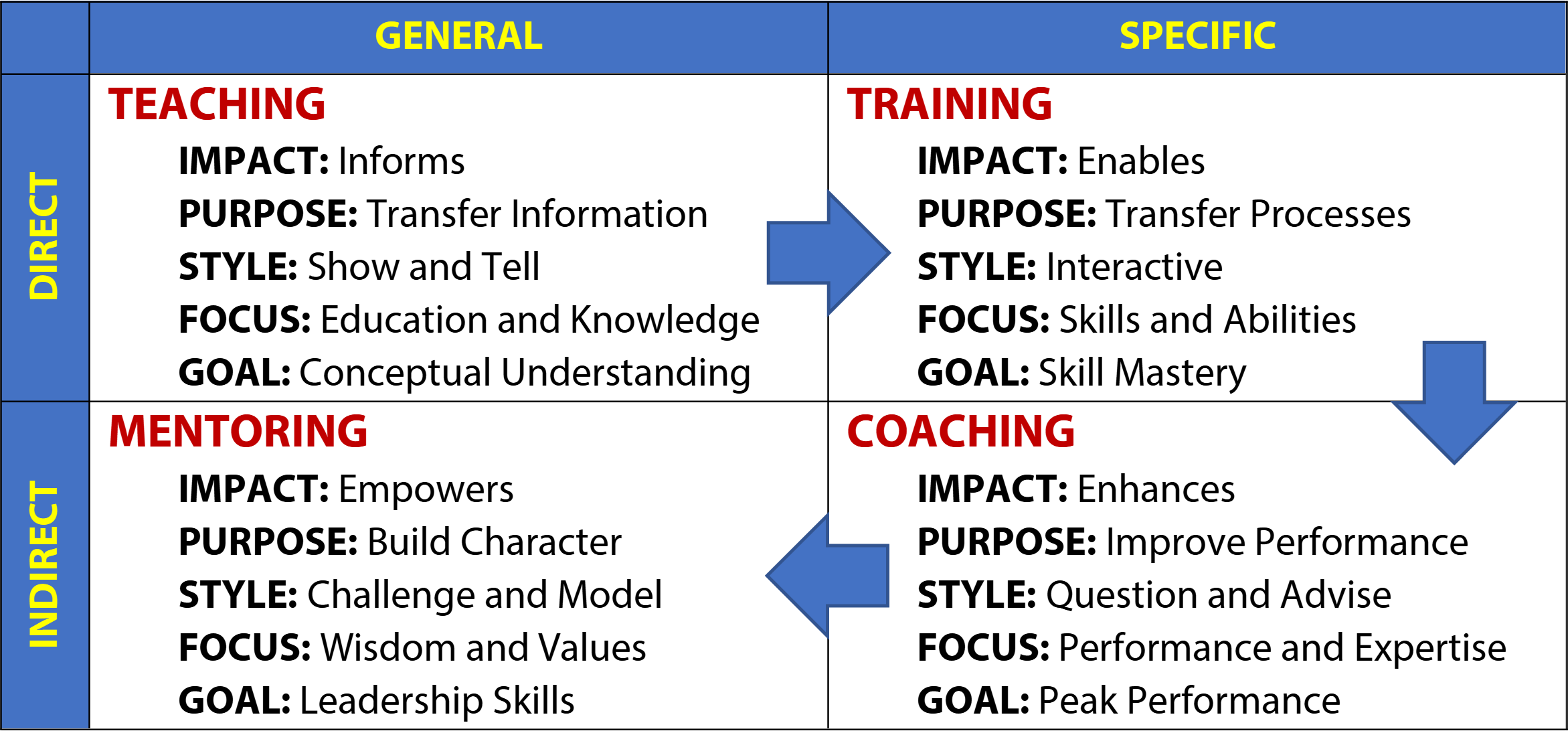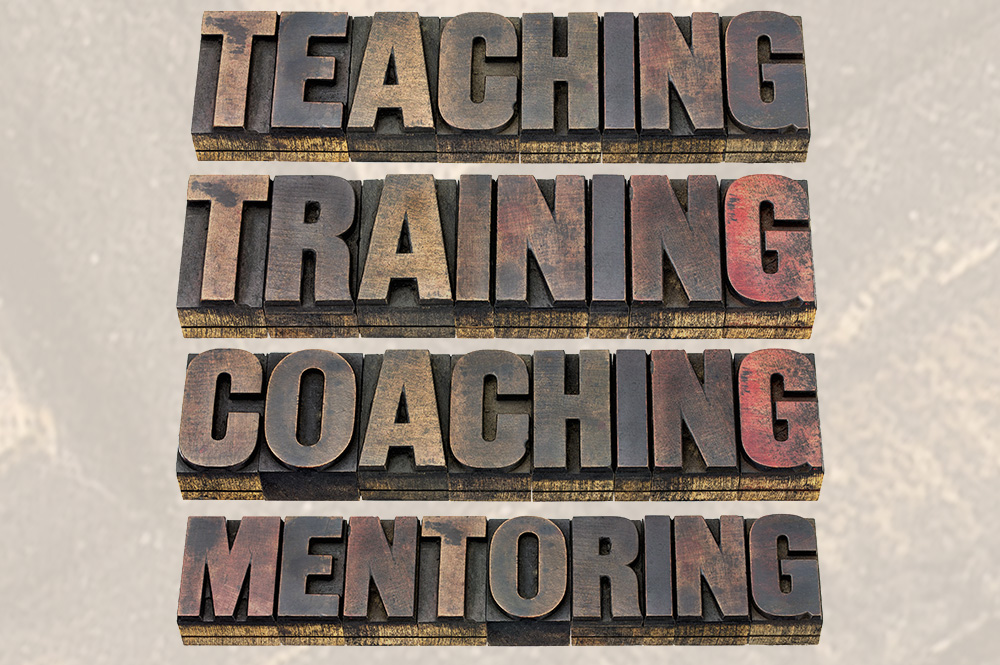In recent months we have been making a lot of internal changes at our agency to operate more effectively and efficiently, as well as to deliver better value to our clients. This internal improvement process has involved new software, new personnel, new skills, new processes, and new ways of thinking.
As we have been onboarding, implementing, and upgrading, I have observed four different approaches to learning … four different techniques for personal development … with four different outcomes. I thought it would be helpful to write about the difference and benefits of these four development styles …
So, what is the difference between Teaching, Training, Coaching, and Mentoring?
Before writing, I sat down to do some research. The more I learned, the more I was convinced that understanding the differences between these four development styles, and knowing when to use each one, are keys that could unlock unprecedented success for a business, ministry, or nonprofit. I hope you find the following information as helpful as I did.
Teaching
Teaching is essentially the transfer of information from one person to another. This additional information provides perspective and context, so it helps develop thinking and increases capability. Teaching focuses on education and knowledge. However, that knowledge tends to be general and conceptual. Teaching does not necessarily include any experiential component … it is purely informational. As long as the information has been transferred, learning has occurred.
Sitting through software onboarding sessions gave us information about how the system works, but at the end of the sessions, we found we learned very little about how to actually use the software for our application. That would require training.
Training
Just as teaching is the transfer of information, training is the transfer of process. Training requires far more than simple information. It requires an interactive process that enables the learner to develop new abilities and master new skills. Instead of being information-focused like teaching, training is step-by-step process-focused. It is practical and specific. Training communicates “how-to” techniques and provides real-life experience geared toward developing actual skills. Training develops new competencies and confident employees.
Here is a time-tested model for training that remains effective today:

Coaching
Once training has resulted in the development of new skills, coaching comes into play to refine those skills to optimize performance. Teaching and training are direct transfers of information and process, while coaching is indirect. Coaching asks questions that require thoughtful answers that will ultimately enhance performance. Good coaching reinforces existing knowledge and improves performance, encouraging people to face challenges and find creative solutions. Coaching helps people think ahead, solve challenges, and navigate the unexpected.
There are a number of coaching models actively practiced in the workplace. The two most popular appear to be:
GROW COACHING
- Goals: Aspirational
- Reality: Current situation
- Options: Possibility
- Will: Actions and accountability
CLEAR COACHING
- Contract: Achievement plan
- Listen: Thoughts and feelings
- Explore: Ask questions
- Action: Specific action steps
- Review: Reflect on progress
Whichever coaching model you utilize, remember that coaching is about drawing out the very best from within an individual—optimizing strengths, overcoming weaknesses, and maximizing performance.
Mentoring
Mentoring is far more than the transfer of knowledge or information. It is the transfer of values within a trust relationship. Mentoring does not focus on a specific set of skills. It is broad, general, and overarching. Mentoring focuses on wisdom, understanding, and values. Mentoring can clarify motives, fill in blind spots, and build a bridge to the future. Rather than building knowledge, skill, or performance, it builds character.
Mentoring helps people think more strategically. It allows individuals to use introspection and observation to clarify motives, remove mental obstacles, and build a bridge to their future. Mentoring molds followers into leaders and leaders into servant-leaders.
Each of these development styles has a valuable place in every work environment. The key is to know the right style to use to meet your objectives. Below is a chart I developed to help you better understand the characteristics of the four styles and to know which style to use to grow and develop your team.

Teaching, Training, Coaching, and Mentoring can all be used with members of your team to create greater understanding, expanded competency, higher levels of performance, and leadership for the future.
Let the professionals at Infinity Concepts help you
to take your team and your organization to the next level!
CLICK HERE or call us today at 724-733-1200.
- The 4D Growth Framework - September 27, 2024
- Navigating Christian TV:Maximizing Impact through Effective Program Placement - December 8, 2023
- Anticipating Direct Mail Success Through Doubling Day - July 28, 2023

